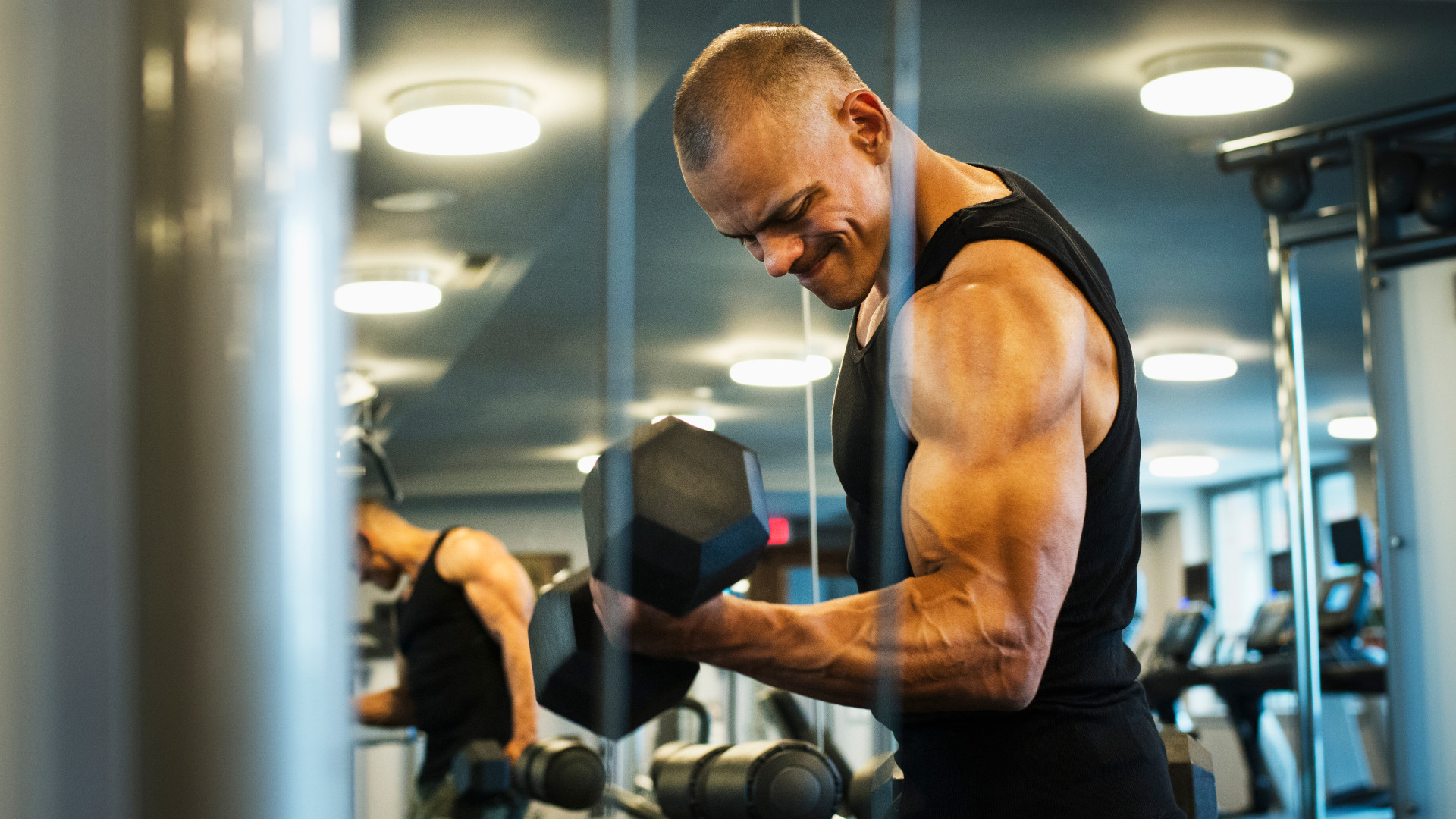
The debate surrounding strength training versus bodybuilding workout plans has been raging for as long as humans have been exercising to improve physical performance.
The mere act of repeatedly moving a weight, or employing some other form of resistance training, has been documented by scholars in Ancient Greece and Ancient China, with early participants looking to improve athletic prowess but also gain a god-like physique in the process.
Both of these exercise theories crossover in a murky middle-ground, where those training for strength will also build muscle, and those simply looking to sculpt the perfect physique will very likely get stronger. The two have a lot more in common than you might think.
But what is the key difference between strength training and bodybuilding? The simple answer is the end result, with strength training routines designed to make athletes stronger, faster and more explosive, while bodybuilding routines have a laser focus on building muscle mass through something called muscle hypertrophy, which is an increase in the size of cells (or tissues) in response to various stimuli.
What is strength training?
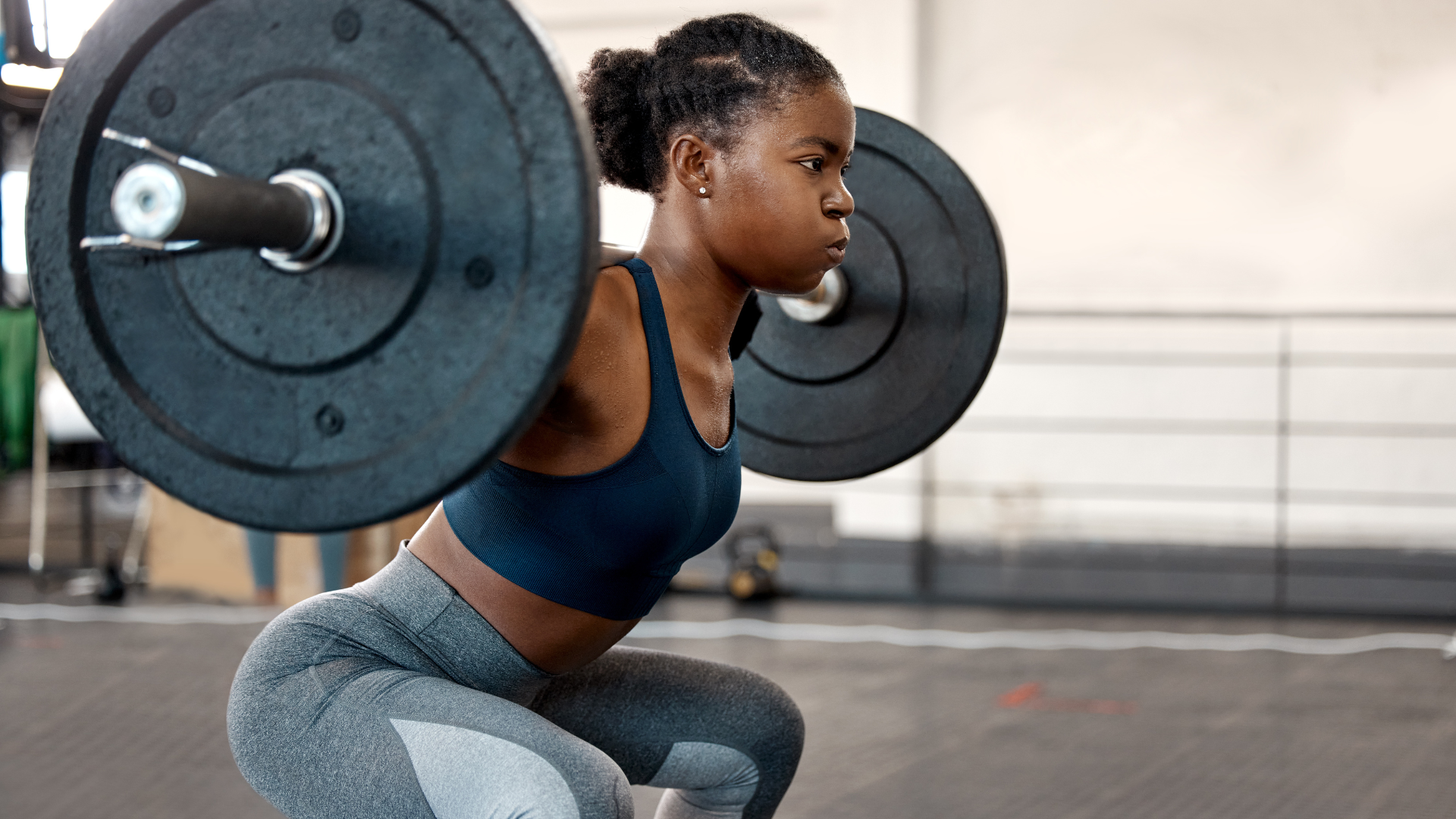
To boil it down to its very simplest form, strength training is a form of resistance training where athletes— or those simply wanting to get stronger— tailor a workout and exercise regime that improves performance, typically making the individual stronger, faster and/or more explosive.
Where professional athletes aren’t focused on aesthetics, their training plans will look to improve a very specific performance aspect, whether that’s enhancing the velocity of a tennis player’s serve or increasing the power in which a rugby player can tackle an opponent.
However, getting into the scientific minutiae of strength training typically requires a lot of studying, degrees in the subject and plenty of experience in the field. It’s a fine art that’s spawned entire industries and sees the best sports scientists and strength coaches paid a lot of money in return for their knowledge and techniques.
But even if you aren’t bothered about absolute strength and peak athletic performance, strength training is beneficial for everyone, as it has been proven to decrease the risk of injury and ensure we are fit and healthy, well into our twilight years.
Peter Attia, a Canadian-American author, physician, and researcher known for his work in longevity medicine, has said that his studies have shown that “people in the lowest quartile of grip strength (i.e., the weakest) had a 72 percent higher incidence of dementia, compared to those in the top quartile.”
It pays to stay strong and employ strength training in your workout routines, even if you are simply striving to get fitter and improve cardiovascular performance.
What is bodybuilding and how is it different from strength training?
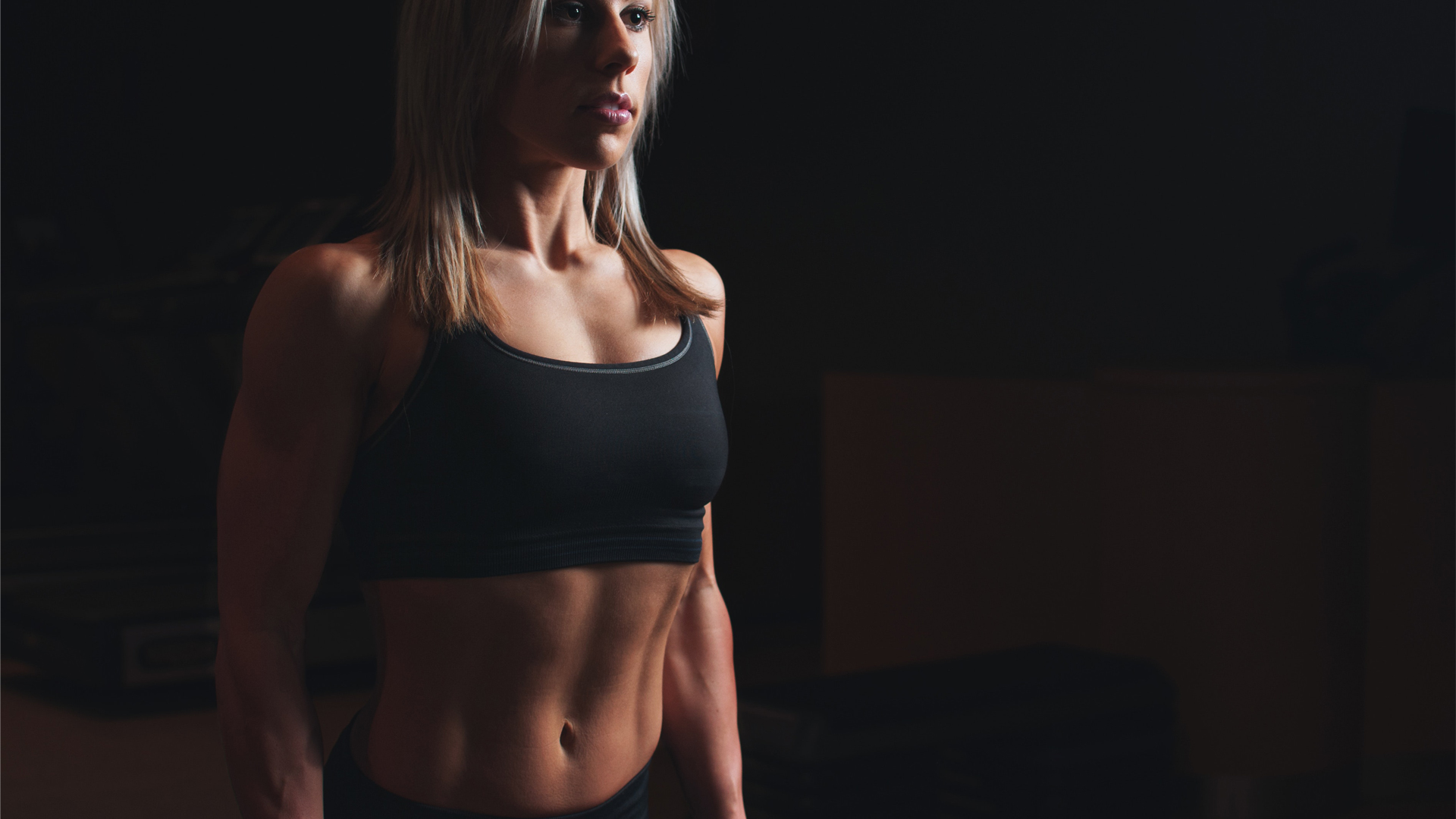
Again, the end goal is very important here, because bodybuilders aren’t necessarily looking to be the strongest person in the room. Pro bodybuilders will be strong, purely from so much time shifting big weight, but they are predominantly building and sculpting muscle in the pursuit of pure aesthetics - or to wow judges when it comes to competitions like Mr and Ms. Olympia or the IFBB World Bodybuilding championships.
A rippling physique is formed in a very different way to those in pursuit or pure strength, as it also involves a lot of work in the kitchen, with various cycles of ‘bulking’ and ‘cutting’ employed to build muscle and reduce body fat.
What’s more, bodybuilding training techniques often involve very targeted exercises that aim to maximise muscle hypertrophy, typically with higher repetitions of a movement at a lighter weight.
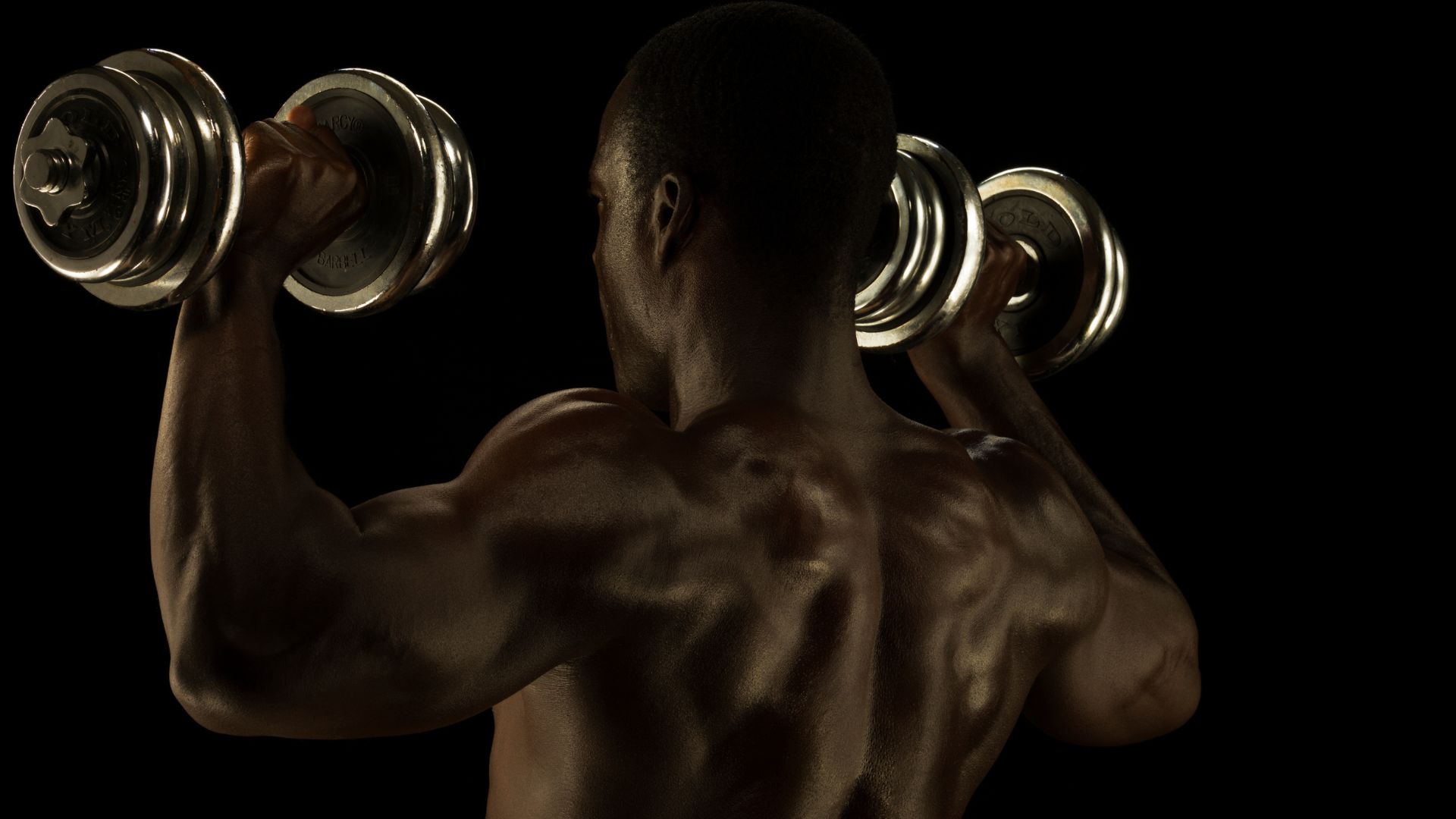
Oppositely, strength training tends to favour heavier weight, with a big focus on progressive overload, performed at much lower reps. Building explosive power and strength is all about putting maximum effort into a movement, which an individual can typically only do a handful of times before hitting that metaphorical brick wall.
Bodybuilders tend to shy away from this form of training, as it puts too much strain on the cardiovascular system and doesn’t allow for lengthy training sessions in the gym where an individual will want to spend time honing in on one particular muscle group - no matter how small or apparently unimportant.
In the US, gym fanatics and military types have coined the phrase “Show Muscles vs Go Muscles”, which is a great way of also summarising strength training versus bodybuilding. ‘Show muscles’ are typically those that people like to train to look good, while ‘Go muscles’ are the powerful muscle groups that help propel the body forward or carry massive loads.
What exercises are best for strength training?
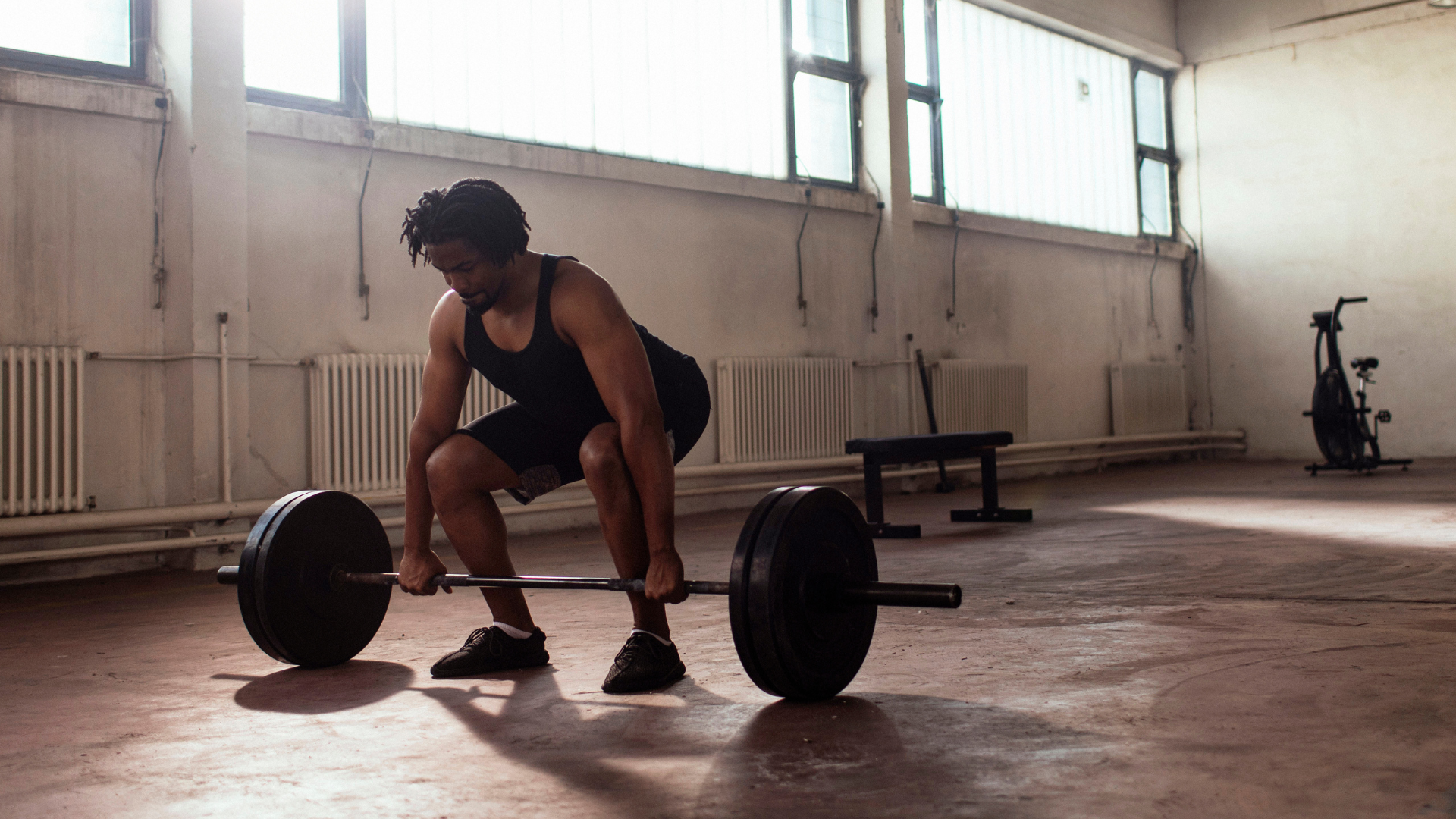
As a rule of thumb, most strength training routines are tailored towards those areas that an individual wants to strengthen. So if a cyclist is looking to gain more power during competitive sprints, for example, they might employ heavy squats performed with explosive power.
Big, compound movements are usually the order of the day where strength is concerned, so exercises like the deadlift, rows, lunges, kettlebell swings and big pressing movements are all good places to start.
We have a couple of great guides to get you started, with the “10 best strength exercises to build muscle at home” an awesome starter for ten for those without much equipment. More advanced strength enthusiasts can look towards our “Best workout for athletic power” guide.
What are the best bodybuilding exercises?
Where someone training for strength will perform bigger compound movements and lifts, bodybuilders will look to push a particular muscle group to the very limits on any given day.
A deadlift, for example, doesn’t usually appear on a bodybuilding programme, simply because there are better exercises for isolating and developing the traps, lats and rhomboid muscles that make for a larger-looking back. Deadlifts also tax the cardio system due to the effort required to perform the lift properly.
In this case, things like dumbbell bent over rows, which isolate each side of the body, lat pull-downs on a specific machine, dumbbell shrugs and close grip pull-downs would all be employed instead.
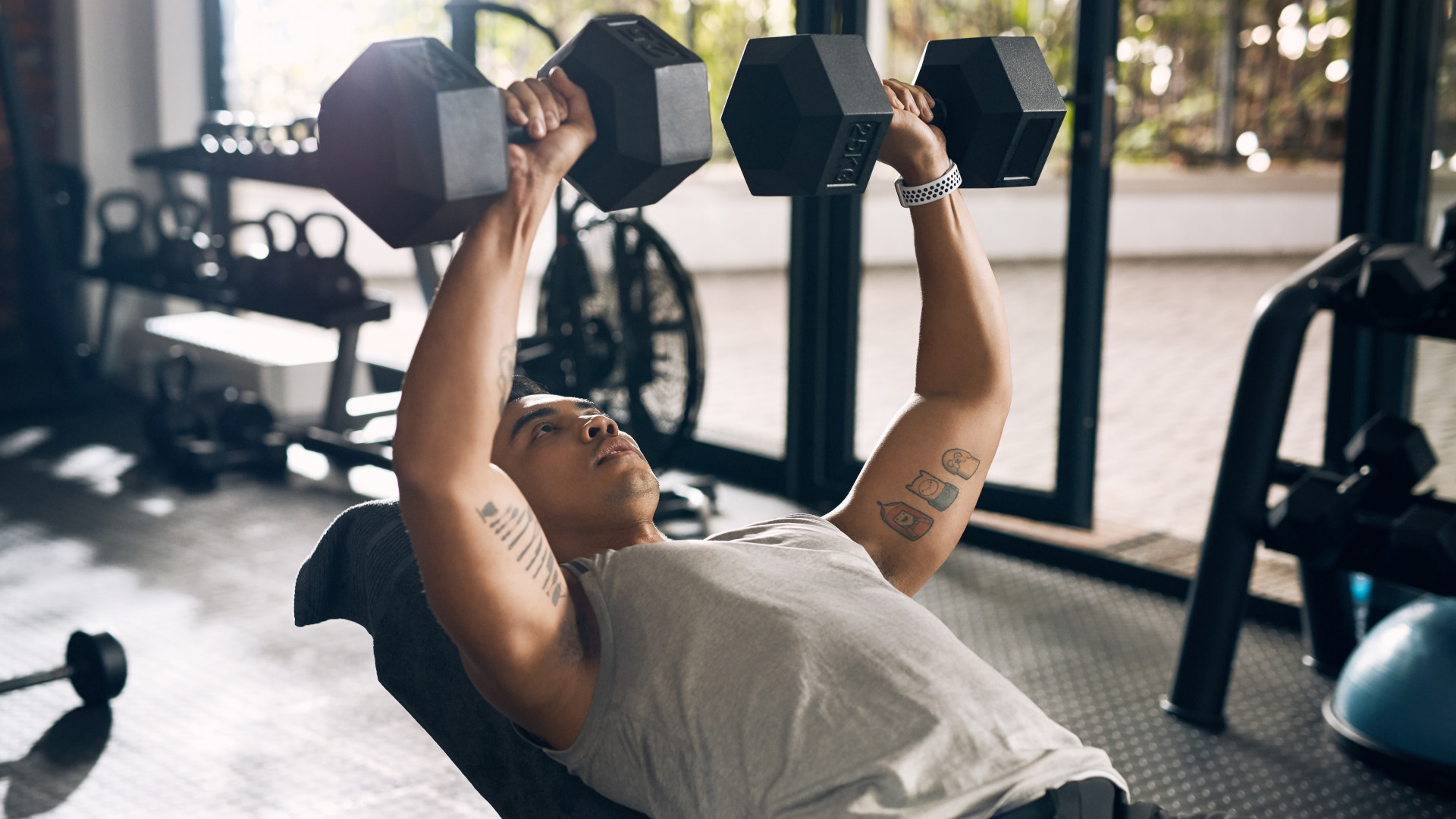
Those training chest for strength would look towards the classic bench press, with a view to progressively overload or add resistance bands for more explosive movements.
Bodybuilding programmes will also look to progressively overload, but will also employ isolation exercises, such as dumbbell flies, cable flies, decline and incline bench press, as well as dumbbell pullovers and dips.
A good place to start for a short, sharp workout that builds muscle is this 30-minute workout, while this five-step guide to packing on muscle is a great starting point for those beginning their body-building journey.







